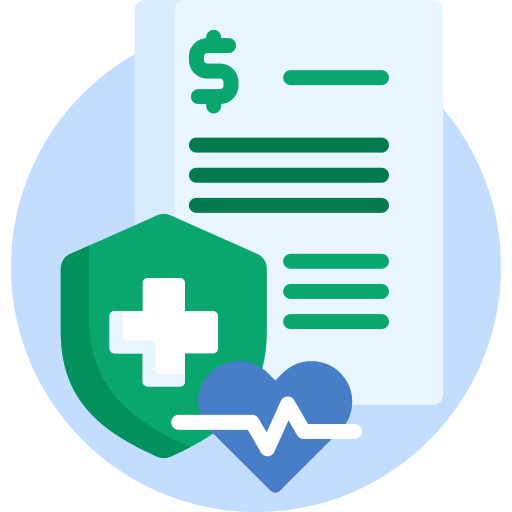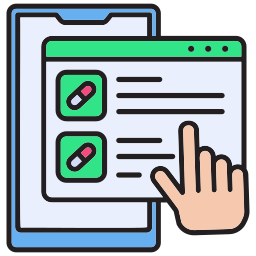The need for seamless EMR integration in healthcare is becoming more crucial as organizations strive to improve patient care and operational efficiency. With medical data constantly expanding, fragmented systems make it challenging for healthcare providers to access and manage information in real time. This is where EMR integration steps in, offering the potential to streamline clinical workflows and enhance communication between departments.
The Cerner EMR system plays a key role in the market, holding around 24.4% of the U.S. hospital EHR market share. Known for its robust platform, Cerner allows healthcare providers to easily handle patient records, appointments, and billing. Its widespread adoption highlights its relevance in today’s healthcare world.
Smooth integration of the Cerner EMR system with existing healthcare workflows is vital for improving efficiency and patient outcomes. Ensuring compatibility across various systems reduces administrative burdens and empowers clinicians to make quicker, data-driven decisions, ultimately leading to better care.
Key Features and Benefits of Cerner EMR Integration
*️⃣ Customization for Diverse Healthcare Settings
Cerner EMR system offers strong customization options, ensuring that healthcare providers can customize the platform's needs. Whether in a small clinic or a large hospital network, Cerner’s flexible architecture allows for seamless integration of features that match workflow requirements. Its adaptability ensures practices of any size can optimize their operations and focus on delivering personalized care to patients.
*️⃣ Advanced Analytics and Patient Management Tools
With Cerner EMR, healthcare providers gain access to advanced data analytics, enabling them to make informed decisions. The system’s powerful patient management tools streamline monitoring and care planning, ensuring patients receive the best treatments. Healthcare organizations can use real-time data to track patient outcomes, identify trends, and adjust care protocols quickly, all contributing to higher-quality care.

*️⃣ Improved Clinical Efficiency and Patient Outcomes
Cerner EMR integration helps healthcare providers improve clinical efficiency by reducing time spent on administrative tasks. Automated processes allow staff to focus more on patient care, improving outcomes. The Cerner EMR system provides real-time access to patient records, enabling clinicians to make quicker, more informed decisions. This ultimately contributes to better patient satisfaction and recovery rates.
*️⃣ Streamlined Workflows, Reducing Administrative Burdens
Integrating the Cerner EMR system into healthcare settings significantly reduces administrative workloads by automating routine tasks like charting, scheduling, and billing. This streamlining of workflows helps healthcare teams focus more on patient care than paperwork, improving overall productivity and reducing staff burnout.
*️⃣ Strong Support Network and Frequent Updates
Cerner’s EMR system includes a dedicated support network and regular updates to ensure optimal performance. This proactive support structure provides healthcare organizations with ongoing assistance, ensuring they remain up-to-date with the latest advancements in EMR technology. Continuous improvements help maintain system security and reliability, giving healthcare providers peace of mind.
*️⃣ Superior Data Accessibility
One reason the Cerner EMR system stands out is its superior data accessibility. The platform enables real-time access to patient records, ensuring healthcare providers can quickly retrieve essential information, even across different departments. This enhances decision-making and improves the care quality. In contrast to other EMR solutions, Cerner’s system is known for offering a user-friendly interface that simplifies data retrieval, minimizing the time spent searching for records. This level of accessibility is particularly beneficial for healthcare organizations with complex patient care requirements.
*️⃣ Ease of Use
Cerner EMR system is designed with the end-user in mind, making it easier for clinicians and administrative staff to navigate and use daily. Its intuitive design reduces the learning curve for new users and ensures that all functionalities are easy to locate and utilize. This user-friendliness contributes to faster adoption rates compared to other EMR systems, which can require extensive training. Cerner helps healthcare organizations minimize downtime and operational disruptions during system integration with a quality user interface.
*️⃣ Scalability for Large Healthcare Organizations
Large healthcare organizations require an EMR system to handle large patient datasets without compromising performance. Cerner EMR system delivers on this front by offering high scalability, ensuring that even the largest hospitals and healthcare systems can manage their workflows seamlessly. Its cloud infrastructure supports thousands of users simultaneously, making it ideal for organizations with complex, multi-site operations. Unlike smaller EMR systems, Cerner’s ability to grow with a healthcare provider’s needs sets it apart as a top choice for large-scale implementations.
*️⃣ Scalability for Small Practices
Cerner EMR system is built for large hospitals; its modular design makes it scalable for smaller practices. Cerner offers various packages tailored to different practice sizes, ensuring that small healthcare organizations can benefit from the same high-quality features without unnecessary complexity. Its cloud-based platform allows smaller practices to scale their operations as they grow, ensuring they have access to the same level of patient care and data management as larger organizations. This flexibility makes Cerner a highly versatile solution for practices of all sizes.
How Cerner EMR System Integration Works?
Integrating Cerner with your website and other systems opens the door to a more connected and efficient healthcare environment. This integration ensures secure data exchange while maintaining HIPAA compliance. By seamlessly integrating Cerner with your website and other essential software, it facilitates a seamless flow of information, eliminating the need for tedious manual data entry and ultimately enhancing the quality of patient care. This interconnected system boosts administrative efficiency and allows your organization to focus on delivering better patient outcomes.

✅ Leveraging Health Level Seven (HL7) Standards
To achieve successful Cerner EMR system integration, using HL7 standards is essential. HL7, an internationally recognized set of protocols, ensures that clinical and administrative data are exchanged efficiently and securely between systems. Cerner EMR simplifies this by utilizing APIs that support modern technology standards such as REST and JSON, making data readable and writable across platforms. This results in faster data sharing and improved communication, empowering healthcare professionals with real-time patient information and ultimately enhancing patient care and streamlined operations.
Related read: FHIR vs HL7: The Battle for Interoperability in Cloud-Based Healthcare
✅ Using SDK for Secure Data Transfers
The SDK ensures that sensitive data, including patient medical records, is securely transferred between Cerner and your website or other connected systems. This minimizes the risk of data breaches and ensures compliance with privacy regulations. Whether it’s patient histories, lab results, or billing information, the SDK guarantees that all data remains protected throughout the integration process, safeguarding both patient confidentiality and the integrity of healthcare operations.
✅ Enabling Access to Records for Patients and Professionals
Integrating the Cerner EMR system with your website and other platforms allows healthcare providers and patients to access records effortlessly. Doctors and staff can retrieve medical histories and test results, enabling more comprehensive patient care. For patients, this integration offers access to their records, empowering them to stay informed about their health. Cerner EMR facilitates this streamlined access by ensuring data flows seamlessly between systems, creating a more transparent and patient-centered approach to healthcare while improving the overall experience for both providers and patients.
✅ Improving Patient Care through Better Data Flow
Integrating Cerner EMR with other systems significantly enhances patient care. Healthcare professionals can quickly access both historical and current patient data, helping them make more informed decisions that benefit long-term patient outcomes. It allows the entire care team to work cohesively, focusing on the patient's overall health. By creating a comprehensive view of the patient's medical history, this integration reduces the chances of oversight and promotes better patient interactions, leading to higher satisfaction and improved care quality.
✅ Streamlining Billing Processes for Efficiency
A key advantage of integrating the Cerner EMR system with your billing processes is the ability to streamline administrative tasks. It allows for the automatic population of billing fields and seamless submission of claims, reducing the need for manual input and minimizing errors. This results in faster claims processing and fewer delays, ensuring healthcare providers receive payments promptly. With integration, staff can focus on core clinical tasks while administrative burdens are lightened, contributing to a more efficient healthcare operation.
How HealthConnect CoPilot can help with Cerner EMR system integration?
Cerner EMR system stands out as a top choice for EMR integration due to its adaptability, strong interoperability, and ability to streamline clinical workflows. Healthcare organizations benefit from its user-friendly interface, advanced data analytics, and improved patient management, making it a reliable solution for both small practices and large healthcare networks. The long-term value lies in its ability to optimize efficiency, reduce administrative burdens, and improve patient outcomes, positioning it as a leader in the EMR market.
HealthConnect CoPilot can further simplify the Cerner EMR system integration process by acting as a customizable integration hub. It allows healthcare providers to connect Cerner with other existing systems, ensuring a smooth exchange of data and a unified workflow. This integration makes it easier to manage patient information and maintain consistent communication across various platforms, ultimately improving operational efficiency.
- What is the benefit of integrating the Cerner EMR system?
Integrating the Cerner EMR system streamlines clinical workflows, enhances patient data access, and improves coordination across healthcare teams.
- How does the Cerner EMR system support interoperability?
The Cerner EMR system supports seamless data exchange with other health systems, ensuring smooth integration across different platforms and improving patient care.
- Can the Cerner EMR system be customized to fit specific healthcare needs?
Yes, the Cerner EMR system offers flexible customization to meet the unique requirements of various healthcare facilities.
- What are the common challenges in integrating the Cerner EMR system?
Common challenges include data migration, staff training, and ensuring compatibility with existing systems during the integration process.

Pravin Uttarwar, CTO of Mindbowser
As the CTO of Mindbowser, a healthcare-focused software development company, I am dedicated to delivering cutting-edge digital solutions that transform patient care and operational efficiency. With over 16 years of experience and as an MIT alumnus, I specialize in healthcare interoperability, FHIR-compliant systems, and AI-powered platforms, crafting scalable products and architectures tailored to the unique needs of healthcare providers and enterprises.
I have spearheaded the development of over 100 products and platforms, guiding them from concept to full-fledged solutions. My expertise extends to scaling remote tech teams, driving EHR integrations, and building secure, cloud-native healthcare solutions. By shaping technology visions and roadmaps, I help clients achieve long-term growth and success in the rapidly evolving healthcare landscape.
HealthConnect CoPilot enabled us to access real-time patient health data through integration with Apple HealthKit, enhancing care delivery while maintaining HIPAA compliance. This led to personalized care and improved outcomes for patients.

AI-enhanced Obstetrics Clinical Decision Support Platform
HealthConnect CoPilot's integration with Epic's Hyperspace has transformed our workflow. Automated post-delivery examinations and HL7 protocol use ensure accurate updates to Epic. Their expertise empowers informed decision-making in childbirth

Top Provider for Customized Healthcare Solutions
HealthConnect CoPilot's helped us to integrate with leading tracking devices such as Apple Watches and Fitbit. This integration enables effortless syncing of health data, providing users with real-time insights displayed directly on our flagship products: smart mirrors and digital calendars.

A Provider of Customizable Display Solutions
Post a comment Cancel reply
Related Posts
SMART App Launch: Standalone
As healthcare data becomes more digitized, the need for accessible, interoperable applications that seamlessly access…
Epic Integration: A Quick 60-Minute Playbook
Epic integration has become an important part of modern healthcare. By connecting different systems, it…
Different Permissions and Possibilities between Epic, Cerner, AthenaHealth, and Meditech
In healthcare, permissions and functionalities within EHR systems are critical as they directly impact how…
The Impact of AI on Electronic Health Records
Electronic Health Records (EHR) have evolved significantly since their inception, transforming how healthcare providers store…
How to Improve Efficiency When Writing Clinical Notes in EHR
Accurate clinical notes are essential for delivering high-quality patient care and facilitating smooth claim processing.…
Athenahealth Integration: A Dive into Benefits and Considerations
As patient data grows increasingly complex, the need for seamless EHR integration becomes more critical. …








